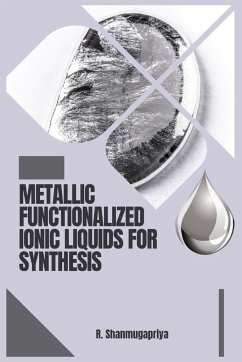Metallic functionalized ionic liquids have been the subject of much interest in recent years, owing to their unique properties and potential applications in various fields such as organic chemistry, catalysis, and material science. R Shanmugapriya and her research team have been working towards the development of new metallic functionalized ionic liquids for synthesis applications. These ionic liquids are unique in that they incorporate metallic species such as Pd, Fe, and Cu, as well as organic ligands such as chloro glycine and imidazolium. This combination of metallic and organic components results in ionic liquids that exhibit remarkable catalytic properties, making them suitable for a wide range of organic transformations. The use of metallic functionalized ionic liquids for organic synthesis is particularly noteworthy as it offers numerous advantages over conventional synthesis methods. For one, these ionic liquids provide a green and sustainable alternative to traditional solvents, which are often toxic and environmentally damaging. Furthermore, they can be tailored to provide high yields, selectivity, and reactivity, which are crucial factors in the successful synthesis of organic molecules. In addition to their use in organic synthesis, metallic functionalized ionic liquids are also being explored for their potential in catalysis. Homogeneous catalysis, which involves the use of a catalyst that is in the same phase as the reactants, is a well-established field. However, the use of metallic functionalized ionic liquids in heterogeneous catalysis, which involves a catalyst that is in a different phase than the reactants, is a relatively new area of research. By incorporating metallic nanoparticles into the ionic liquids, it is possible to create a heterogeneous catalyst that exhibits superior catalytic properties compared to traditional catalysts. The physical and chemical properties of metallic functionalized ionic liquids are also being studied. Coordination chemistry and metal-ligand interactions are of particular interest, as they play a crucial role in determining the catalytic properties of these ionic liquids. Moreover, the surface chemistry of the metallic nanoparticles can also affect the overall performance of the catalyst, and thus, it is an area of active investigation. In conclusion, the development of metallic functionalized ionic liquids by R Shanmugapriya and her research team holds great promise for the field of organic chemistry and catalysis. With their unique properties and potential applications in sustainable chemistry, these ionic liquids are likely to play an increasingly important role in the synthesis of complex organic molecules and the development of new catalysts for a wide range of reactions.








